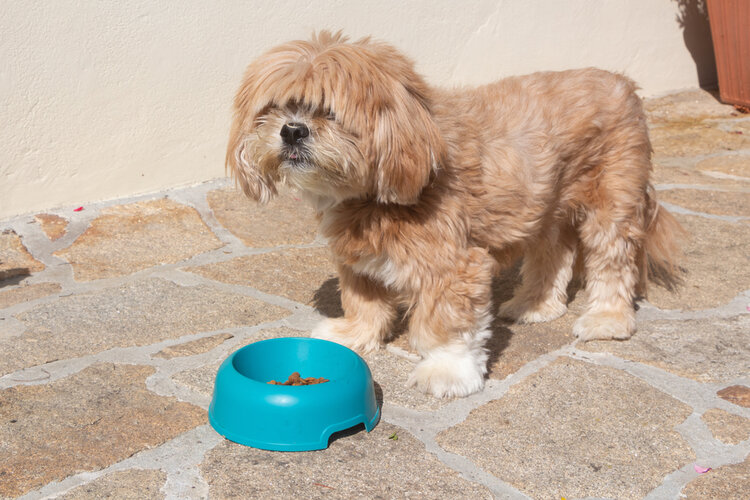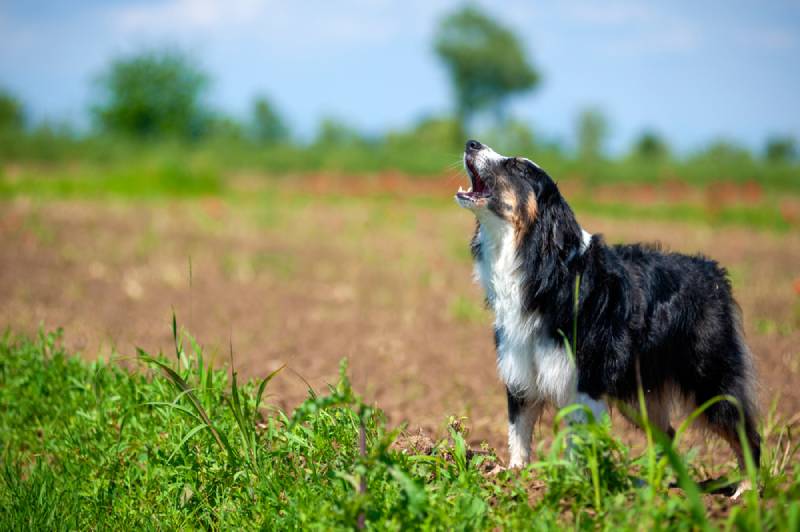How Big Do Cane Corsos Get? (With Growth and Weight Chart)

Updated on
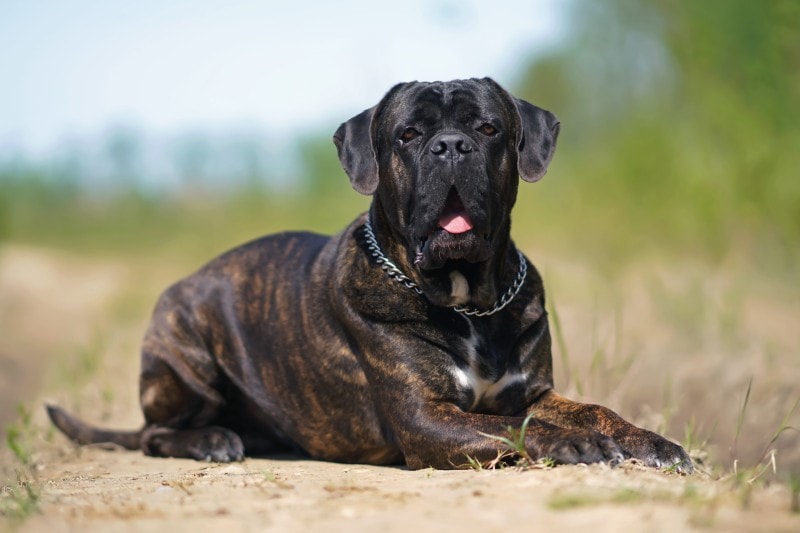
Click to Skip Ahead
The Cane Corso is a stunning breed that reaches an impressive size and possesses incredible strength to go along with it. It’s easy to fall in love with those adorable roly-poly puppies when you first bring them home, but that stage is not going to last long at all.
In the blink of an eye, you are going to have a very large, very capable dog on your hands. The Cane Corso will reach anywhere from 23.5 to 27 inches at the shoulder and weigh anywhere from 88 to 110 pounds or more.
Keep reading to learn more about the growth and development of the Cane Corso and what you can expect as they grow from that cute little puppy to a formidable adult.
Facts About the Cane Corso
- The Cane Corso is an Italian mastiff breed that is dated back to Ancient Rome. They were used as Roman war dogs, bodyguards, and protectors of property and livestock across the Italian countryside.
- The Cane Corso is closely related to the Neapolitan Mastiff. Both breeds are known for their impressive size and protective nature. It is believed both breeds’ ancestors were the now-extinct Greek Molossus dogs and were developed after these dogs were brought to Italy after the Greek Islands were conquered.
- The breed nearly went extinct since they were limited to Italy during a very difficult period full of war and economic downturn. Breed enthusiasts rescued the breed by finding the select few remaining in Italy. They began making a comeback in the 1970s and a breed society was formed in 1983.
- The Cane Corso didn’t make its way into the United States until 1988. They received official recognition from the American Kennel Club in 2010.
- The Cane Corso is now one of the most popular dog breeds in the country. They are used as both companions and protectors. They are a very intelligent working breed that requires a lot of exercise and mental stimulation. They can make great family pets but owners must be prepared to train and socialize them early, as this is a very willful and powerful breed.
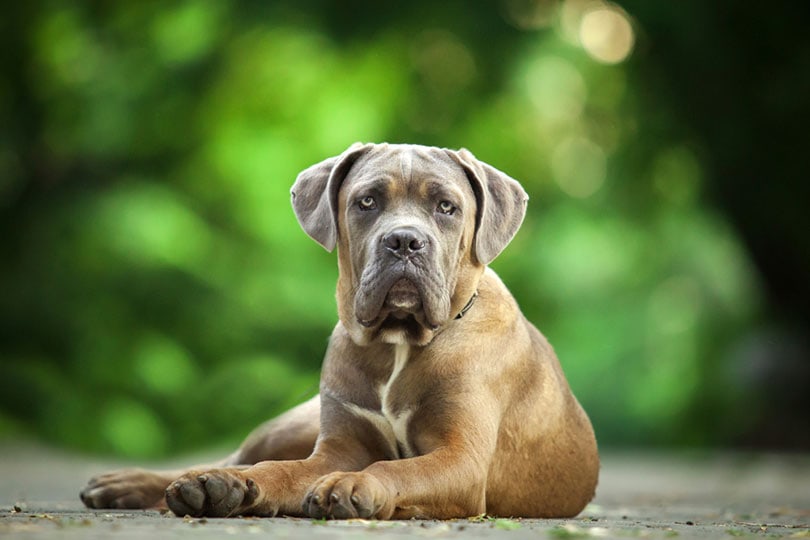
Cane Corso Size and Growth Chart
Male Cane Corso
| Age | Weight Range (lbs) |
| 1 Month | 20–28 |
| 2 Months | 30–36 |
| 3 Months | 35–40 |
| 4 Months | 42–46 |
| 5 Months | 48–55 |
| 6 Months | 60–65 |
| 7 Months | 65–70 |
| 8 Months | 70–80 |
| 9 Months | 80–90 |
| 10 Months | 85–95 |
| 11 Months | 90–100 |
| 1 Year | 90–105 |
| 2 Years | 99–110 |
Female Cane Corso
| Age | Weight Range (lbs) |
| 1 Month | 16–25 |
| 2 Months | 26–32 |
| 3 Months | 30–37 |
| 4 Months | 36–43 |
| 5 Months | 42–50 |
| 6 Months | 55–60 |
| 7 Months | 60–65 |
| 8 Months | 65–72 |
| 9 Months | 68–75 |
| 10 Months | 75–82 |
| 11 Months | 80–90 |
| 1 Year | 85–95 |
| 2 Years | 88–99 |
When Does a Cane Corso Stop Growing?
A Cane Corso goes through some impressive growth spurts as they make their way from puppyhood to adulthood. This breed will typically reach their mature height by 1 year of age. It takes a little longer to reach their mature weight, as they tend to continue filling out throughout their second year of life. You can expect a Cane Corso to stop growing around the 2-year mark.
Factors Affecting the Size of the Cane Corso
Genetics
Genetics play a very large role in the size of a Cane Corso. By breed standards, females should reach a shoulder height between 23.5 and 26 inches while males reach anywhere from 25 to 27.5 inches with a weight that is proportionate to their height.
You can typically look at a puppy’s parents to help you estimate their mature size, but this isn’t always accurate. Genetics are very unpredictable and are passed down through generations. Because these are purebred dogs that are kept to standards, reputable breeders work to produce sizes that are within the breed’s standard.
Certain genetic conditions can also affect or inhibit growth, which is why it is important to obtain a puppy through a reputable breeder that completes the necessary health testing and promotes the best genetics in their dogs.
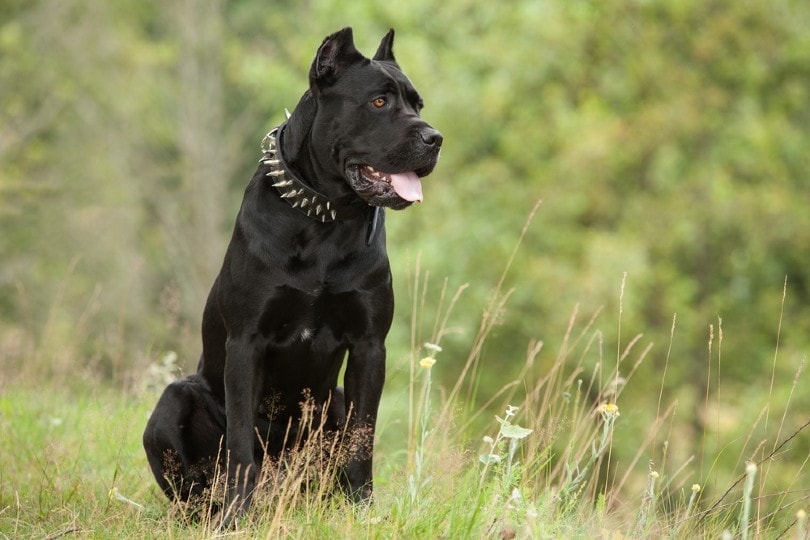
Nutrition
Nutrition plays a large role in Cane Corso’s growth. If a puppy is not receiving a well-balanced diet of proteins, fats, and essential vitamins and nutrients, it can affect their growth significantly. A nutritious diet affects all aspects of growth and development.
Cane Corso puppies should be fed a high-quality diet that is appropriate to their size. Owners should make sure their commercial puppy food meets the AAFCO nutrient profiles for the growth of large-breed puppies to ensure they are getting what they need for proper growth and development.
Poor nutrition can inhibit proper growth and may ultimately lead to some serious health conditions later on down the road. If you were to have any questions about properly feeding your Cane Corso puppy, reach out to your veterinarian for further information.
Ideal Diet for Maintaining a Healthy Weight
Once your Cane Corso is ready to switch from a puppy diet to an adult diet, it will be important that you feed them a diet that is appropriate to their size, age, activity level, and overall health. Since each dog is different, you can work alongside your veterinarian to come up with the optimal meal plan to meet all their needs.
There are many commercial food options available on the market nowadays and it can be quite overwhelming to find the perfect food for your Cane Corso. Not only do you have traditional dry kibbles but also canned, freeze-dried, and fresh food options.
Some owners even opt to make homemade dog food. Regardless of what you choose, make sure the food is high-quality and offers the optimal balance of protein, fat, fiber, and essential vitamins and nutrients.
You want to make sure you exercise your Cane Corso regularly and avoid overfeeding to keep them at an ideal weight. The Cane Corso is predisposed to certain genetic health conditions like hip and elbow dysplasia, so it is important to prevent them from becoming overweight. Not only is excess weight very hard on the bones and joints of these large dogs, but obesity can also lead to many other health conditions.
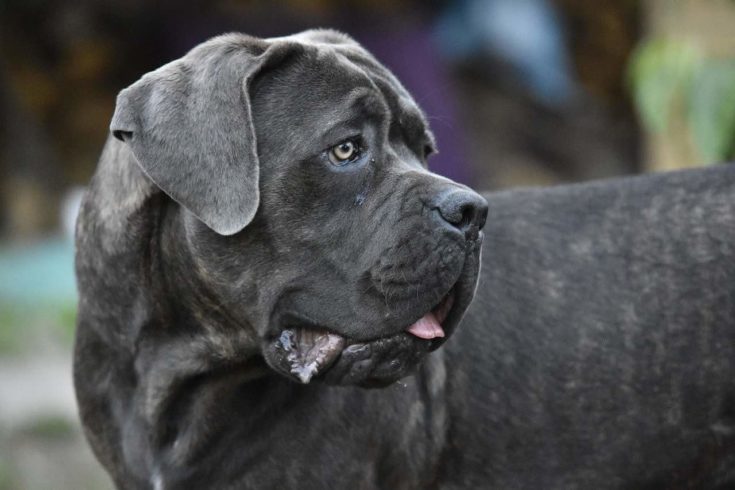
How to Measure Your Cane Corso
To measure the height of your Cane Corso you will need to have them stand up straight with their legs perpendicular to the floor. Keep their front feet shoulder-width apart and place them in a square stance with all four feet spaced out evenly.
You will measure their height at the withers, which is the highest point of the shoulder blade. Use a tape measure to see how tall they are by placing one end at their feet and the other at the tip of the withers. You may need to ask for help during this process if you have trouble keeping your pup still.
You can easily check your dog’s weight by having a size-appropriate scale. Gently place them on the scale and see what number it comes up with. Make sure they have their entire body evenly distributed on the scale to get an accurate result.
If you only have a small scale in the home, it won’t last you very long in weighing the massive Cane Corso. You can always weigh yourself and then pick your dog up (while they’re still small) and then calculate the difference. It’s going to be difficult weighing a large Cane Corso pup or a full-grown adult, which is why we recommend either investing in a large scale or taking them to the veterinarian to check their weight.
Conclusion
The Cane Corso is a very large and muscular breed with incredible strength. They can stand anywhere from 23.5 to 27.5 inches at the shoulder and reach a mature weight between 88 and 110 pounds or more. Males are naturally larger than females but both genetics and nutrition play a key role in their growth and overall size.
It’s very important to feed a Cane Corso a premium quality, well-balanced diet to support their growth and development and to help them maintain a healthy weight once they reach adulthood. Keep up with regular wellness exams with your veterinarian to track their growth and ensure they are as healthy as possible.
You might also like:
Featured Image Credit: Eudyptula, Shutterstock



